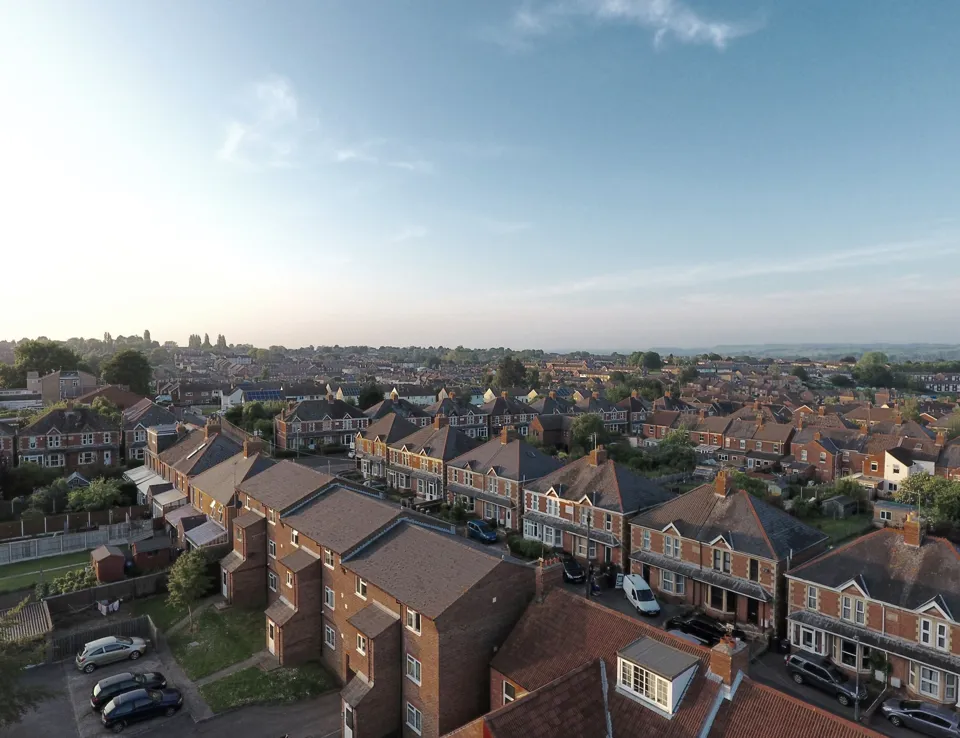I’ve got a net zero plan – now what? Ideas on how to embed net zero into local policy making
As part of a series of related blogs on embedding net zero into local policy making, we kick things off by giving an overview of three practical steps local authorities can take to operationalise their net zero plans, so that net zero moves from being a standalone issue to being embedded in everything a council does.
Getting to net zero is a marathon, not a sprint
Hundreds of local authorities across the UK have declared climate emergencies. Most of these have also set a target to achieve ‘net zero’ greenhouse gas emissions (GHG) across their local area and some have prepared plans that set out how they will deliver this. Ricardo has been working with many local authorities as they go through this process and will continue to do so.
But a net zero plan is only the start of the journey. Once a net zero action plan is in place, the question we often get asked is “what now?”.
There are so many things that can, and need, to be done, from making buildings more thermally efficient, and decarbonising the supply of heat in homes, to getting people out of cars and into public transport, or walking and cycling, to changing how we generate and dispose of waste or adapting our land use to absorb more carbon. And knowing where to start can be quite overwhelming. But perhaps the biggest gains can come from embedding net zero considerations into everything that is done in a local area, a process sometimes also known as ‘climate mainstreaming’.
Climate mainstreaming
This matters not only from an emissions perspective, but also in terms of engaging with businesses, other organisations and the public on net zero. People look to local authorities for leadership on climate action and are more likely to take action themselves if they see others – in particular their council – doing the same. But there is a risk that all the good things that a council is doing, or plans to do, to reduce GHG emissions could be overshadowed if the public can see that roads are still being built, new homes are being constructed with gas boilers or woodlands are being cleared – all things that could appear as being counter to net zero. People are surprisingly good at sniffing out contradiction and will notice when a council is saying one thing but seemingly doing another.
So that’s the theory. But what about the practice? What does climate mainstreaming actually look like at a local level?
At Ricardo we have recent experience of three practical steps that local authorities can take to embed net zero considerations into wider policies, plans and strategies. Ensuring that:
- local development plans are updated in a way that is consistent with net zero,
- infrastructure projects are being appraised with net zero in mind; and
- the council’s own procurement is supporting emissions reductions in its supply chain.
Local plans
Section 3 of the National Planning Policy Framework (NPPF) requires that each local planning authority should prepare a Local Plan for its area, either by itself or jointly with other local planning authorities. (An LPA is usually the local authority, but in some cases can be other organisations, for example national parks authorities.) Local Plans1 guide decisions on future development and address the needs and opportunities of the area, identifying where development should take place and areas where development should be restricted . Local plans need to be updated every five years and this provides a great opportunity for local authorities to review the content of the local plan and to consider how it can be made as compatible as possible with their net zero aspirations. We are currently doing this for three local authorities in England – Mid Sussex District Council, North Northamptonshire Council (both working with Land Use Consultants) and East Hampshire District Council. For these projects we are compiling an evidence base that can help ensure that the updated local plans contain policies that are supportive of net zero. Much of this relates to standards for new buildings, but can also go wider, covering topics such as land use, renewable energy and transport.
Infrastructure projects
Local authorities often have large investment programmes to support development of new infrastructure in the local area. Huge gains can be made by ensuring that these programmes align with and support net zero. Ricardo, in partnership with Mott MacDonald, recently completed a project for West Yorkshire Combined Authority (covering the local authorities of Bradford, Calderdale, Kirklees, Leeds and Wakefield) to do just this. The work, which is summarised in this Combined Authority meeting report2, is helping the combined authority put in place a process and methodology for measuring the carbon impacts of proposed projects and to take stock of their compatibility with net zero. Applying this approach, local authorities can have more confidence that large infrastructure projects being carried out in the local area are aligned with and supportive of net zero.
Sustainable procurement
Ricardo has been helping Mid Sussex District Council (MSDC) to develop net zero pathways and an action plan. One of the things this work highlighted was that the vast majority of the Council’s own emissions were scope 3, with most of this coming from the category ‘purchased goods and services’. This is a fairly common picture for local authorities and other organisations, and shows the importance of sustainable procurement, to encourage emissions reductions in an organisation’s supply chain. MSDC subsequently commissioned Ricardo to carry out a deep dive into this issue. We carried out a strategic spend review and used the data, alongside an evaluation of the procurement processes, to identify the most strategic options for decarbonising procurement. From this work, we developed a tool that will help the Council to further prioritise and target procurement interventions to drive down carbon emissions in their supply chain, along with a practical action plan that will help them reshape their procurement operations in line with their net zero targets.
Closing thought
Having a net zero plan is an important first step. Next comes the challenge of climate mainstreaming – to embed net zero into all policies and plans. Doing this from the outset will make delivering net zero easier and more efficient in the long-term and will show local stakeholders that councils are being ‘joined-up’. We will explore the three practical steps (and others) involved in embedding net zero in more detail over the coming months.
In the meantime, if you have any questions or want to know more about the projects mentioned above, get in touch.









